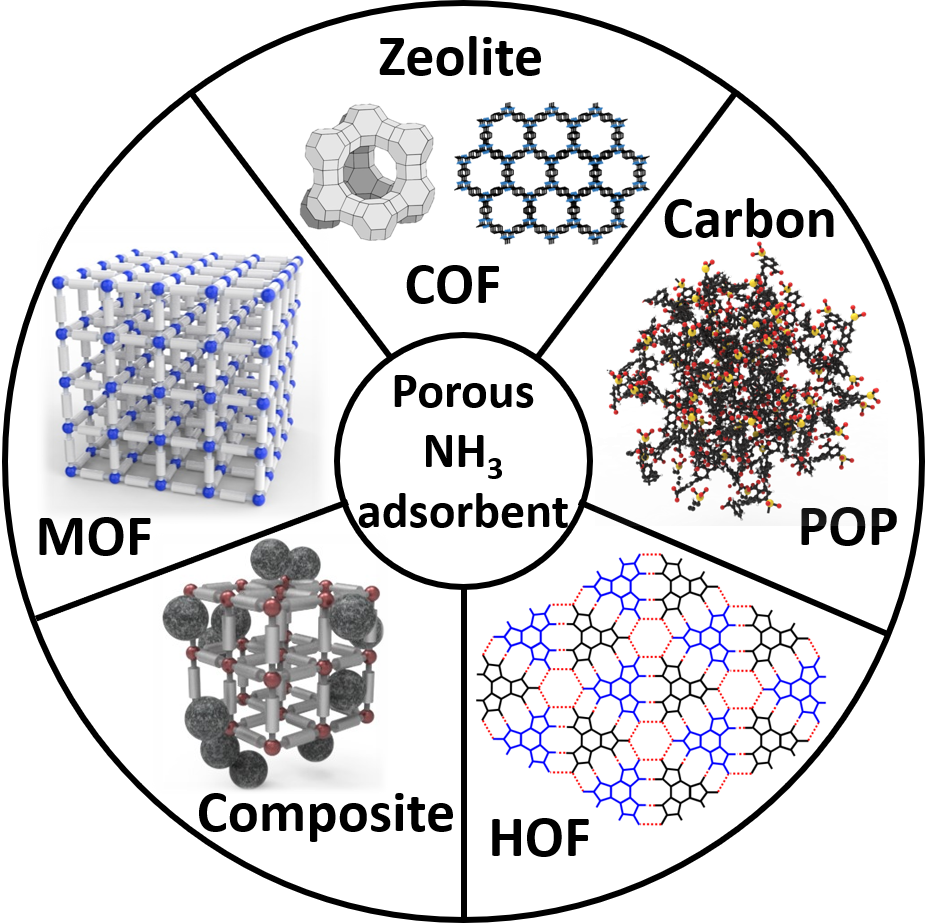
강동원(제 1저자)
NH3, essential for producing artificial fertilizers and several military and commercial products, is being produced at a large scale to satisfy increasing demands. The inevitable leakage of NH3 during its utilization, even in trace concentrations, poses significant environmental and health risks because of its highly toxic and reactive nature. Although numerous techniques have been developed for the removal of atmospheric NH3, conventional NH3 abatement systems possess the disadvantages of high maintenance cost, low selectivity, and emission of secondary wastes. In this context, highly tunable porous materials such as metal–organic frameworks, covalent organic frameworks, hydrogen organic frameworks, porous organic polymers, and their composite materials have emerged as next‐generation NH3 adsorbents. Herein, recent progress in the development of porous NH3 adsorbents is summarized; furthermore, factors affecting NH3 capture are analyzed to provide a reasonable strategy for the design and synthesis of promising materials for NH3 abatement.

https://doi.org/10.1002/advs.202002142
 High Ammonia Uptake of a Metal–Organic Framework Adsorbent in...
High Ammonia Uptake of a Metal–Organic Framework Adsorbent in...
 Light-directed trapping of metastable intermediates in a self...
Light-directed trapping of metastable intermediates in a self...

















